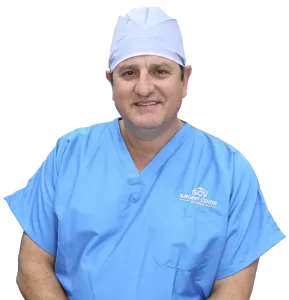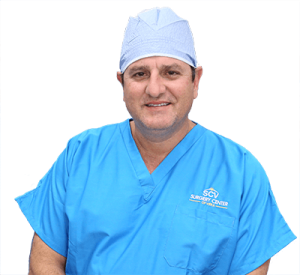Have you been suffering from back or neck pain? If so, then there are a few different options for treatment. One of the most popular treatments is radiofrequency ablation. This article will provide an overview of what this procedure entails and the risks and benefits to consider before undergoing it.
A radiofrequency rhizotomy injection (RFA) procedure uses radiofrequency heat to deaden nerves that send pain signals from the spine. In some cases, when pain is due to osteoarthritis of the spine’s facet joints, radiofrequency rhizotomy can be used periodically to effectively manage pain. Various other facet block procedures can also be used to block the transmission of pain signals from the facet joint.
The main objective of treating sacroiliac and facet joints with RFA is to:
The three main types of RFA used to produce heat lesions on tissues include:
This variation of RFA uses a needle to deliver short bursts of high-voltage current with silent phases in between when no current is passed. In PRF, the needle is heated to approximately 107 degrees Fahrenheit.
In CRF, a needle is used to deliver continuous high-voltage current in other to produce a heat lesion. Usually, the tip of the needle used in CRF is heated between 140 to 176 degrees Fahrenheit.
In this variation of RFA, a specialized needle is heated up to 140 degrees Fahrenheit but it is also cooled by a continuous flow of water. The continuous flow of water allows a regulated flow of current while also preventing the needle tip from being over-heated.
Here are things to expect during Radiofrequency ablation.
Radiofrequency ablation can either be performed under mild sedation or not. Usually, if sedation is used, the patient is kept conscious to enable them describe what they feel during the stimulation and lesioning of the nerve.
Radiofrequency ablation usually involves the following steps:
RFA usually takes about thirty to ninety minutes. And patients are usually advised to have someone drive them home after the procedure.
After RFA, the patient is moved to a recovery room for 15 minutes to an hour (occurs when sedation is used), and the patients’ vital signs are continually observed. Depending on the area treated, a superficial burning pain with hypersensitivity that is similar to a sunburn feeling may be experienced. Also, a slight numbness of the skin over the same area may be experienced by the patient.
The following are precautions and tips for the first few days after RFA:
Radiofrequency ablation is a safe, low-risk procedure that may cause certain side effects and complications in some people. You should discuss the potential risk of adverse reactions or those related to this treatment with your doctor prior so you can make an informed decision about whether it’s right for you!
There are many benefits to consider before undergoing radiofrequency ablation.
Despite the benefits to radiofrequency ablation, there are also several risks that you should be aware of before getting this treatment:

Dr. Bharat C. Patel is one of the physicians at Deuk spine institute and he is the best doctor for RFA (a procedure that is generally effective at treating back and neck pain). His credentials include board certifications in pain medicine, sports medicine, physiatry, electrodiagnostic medicine, and interventional pain management. Fewer than one in 10,000 physicians nationwide are quintuple board certified. The highly respected Becker’s Orthopedic, Spine, and Pain Management Review included Dr. Patel on their published list: The Best Pain Management Physicians in America. Becker’s has also named Dr. Patel to their exclusive list of the “12 Great Physicians in Florida.”
Dr. Patel completed his internship in surgery at Sound Shore Medical Center of Westchester in New Rochelle, New York, and residency at New York University School of Medicine, and finished with his fellowship in interventional pain management at Clearwater, Florida. Dr. Patel is a U.S. citizen and a registered Florida state medical care practitioner.
Patients travel from South Florida, Orlando, and the Space Coast to get treated by Dr. Patel because of his commitment to their health and wellbeing.
Schedule an appointment with Dr. Bharat Patel at Deuk Spine Institute

Dr. Maulik Bhalanit is the founder and CEO of Florida Pain Medicine, a comprehensive pain clinic that provides treatment for patients with chronic pain. Dr. Maulik Bhalanit is a graduate of the University of Miami School of Medicine, and he has more than 15 years of experience in the field of pain management. Dr. Bhalanit is a member of the American Society of Interventional Pain Physicians and the American Academy of Pain Medicine
Dr. Maulik Bhalanit of Florida Pain Medicine helps patients who are struggling with chronic pain of all kinds, including those who have post-surgical pain or arthritis pain of the hands, back, hips, knees and feet. Dr. Bhalanit’s treatments include minimally invasive procedures that can offer patients relief from their chronic pain. These include radiofrequency ablation.

Dr. David C Pires is board certified by The American Osteopathic Board of Anesthesiology. He was a licensed personal trainer passionate about assisting top athletes in regaining function and strength following surgery or an injury.
Pires was certified in pain management by the American Osteopathic Board of Anesthesiology. He is passionate about helping athletes recover from surgery or injuries.
After undergraduate studies at the University of California, Pires received his medical doctorate. He did an internship rotation at San Bernardino County Medical Center and postdoctoral clinical training at The Riverside University Health System – Medical Center in Moreno Valley, California. Dr. Pires completed his postdoctoral clinical training at Cedars-Sinai Medical Center in Los Angeles, where he currently serves as an educator for residents and fellows.
Radiofrequency ablation is a newer procedure that uses heat to stop pain signals from reaching the brain, while steroid injections use powerful anti-inflammatory drugs to achieve the same goal.
While both procedures can be effective in reducing back and neck pain, radiofrequency ablation may have a higher success rate and longer lasting effects. Radiofrequency ablation also has fewer side effects than steroid injections which can lead to weight gain and mood swings after treatment. Additionally, there is a small risk of infection with steroid injections, while radiofrequency ablation is considered to be a relatively safe procedure.
However, it’s important to discuss both options with your doctor and make the decision that is best for you.
The following are commonly asked questions about radiofrequency ablation:
The radiofrequency ablation procedure is generally safe and effective. However, it’s not for everyone.
You will need to meet with your doctor before the treatment to evaluate whether or not you are a good candidate. If you have any of the following conditions, then this procedure may not be right for you:
When it comes to the success rates of radiofrequency ablation, it usually depends on several factors such as the accuracy of the diagnosis, type of technique used, variations in the anatomy of the nerve. In some patients, there has been a 100% reduction in pain from RFA. According to research:
Generally, if RFA is effective, it may provide pain relief lasting six months up to two years. However, there are patients experiencing pain relief for up to three years, and during or after this period, the nerve regenerates, and there’s a chance the pain may or may not return. And the pain from this treatment is more significant when performed on the facet joints than the sacroiliac joints. Also, some patients may not experience any relief from pain after this procedure.
Radiofrequency ablation uses heat to prevent pain signals from reaching the brain. A catheter is inserted into the treatment area, and this allows doctors to deliver radio waves which heats up an area of tissue, killing nerve cells in that area as well as reducing swelling and inflammation. This can help reduce back or neck pain caused by injured nerves.
Radiofrequency ablation is not considered bad, but you must know the risks before getting this treatment. You should meet with your doctor and discuss everything in detail so that you can make an informed decision about whether or not radiofrequency ablation is right for you.
The pain associated with radiofrequency ablation can vary depending on the person. Some people report a burning sensation or skin irritation during treatment, but this is not common. You may also experience some pain and stiffness in the treated area following the procedure.
Radiofrequency ablation usually lasts around a few months, although your doctor may recommend additional treatments to help maintain pain relief.
Depending on how many areas need to be treated, it can take between half an hour and two hours for the entire procedure. You will likely spend some time getting prepped for the procedure, and then you will be monitored for a few hours afterward.
Most people can return to their normal activities shortly after treatment, although strenuous exercise should be avoided for a few days. You may need to take some time off work if you have a lot of desk-based work, as this can put a strain on your back.
The success rate for radiofrequency ablation is pretty high. Most people experience relief from their pain after just one treatment session, although the full effects of this procedure may take a few weeks to be felt. You will need to have additional treatments for this procedure to be effective long-term.
If you’re suffering from chronic back and neck pain and you need an alternative solution to radiofrequency ablation, Deuk Spine Institute is the best place to discover an alternative.
Deuk Spine Institute is the world leader in Laser Spine Surgery and Interventional Pain Management. Request a free MRI review to learn what procedure would be best for you.

